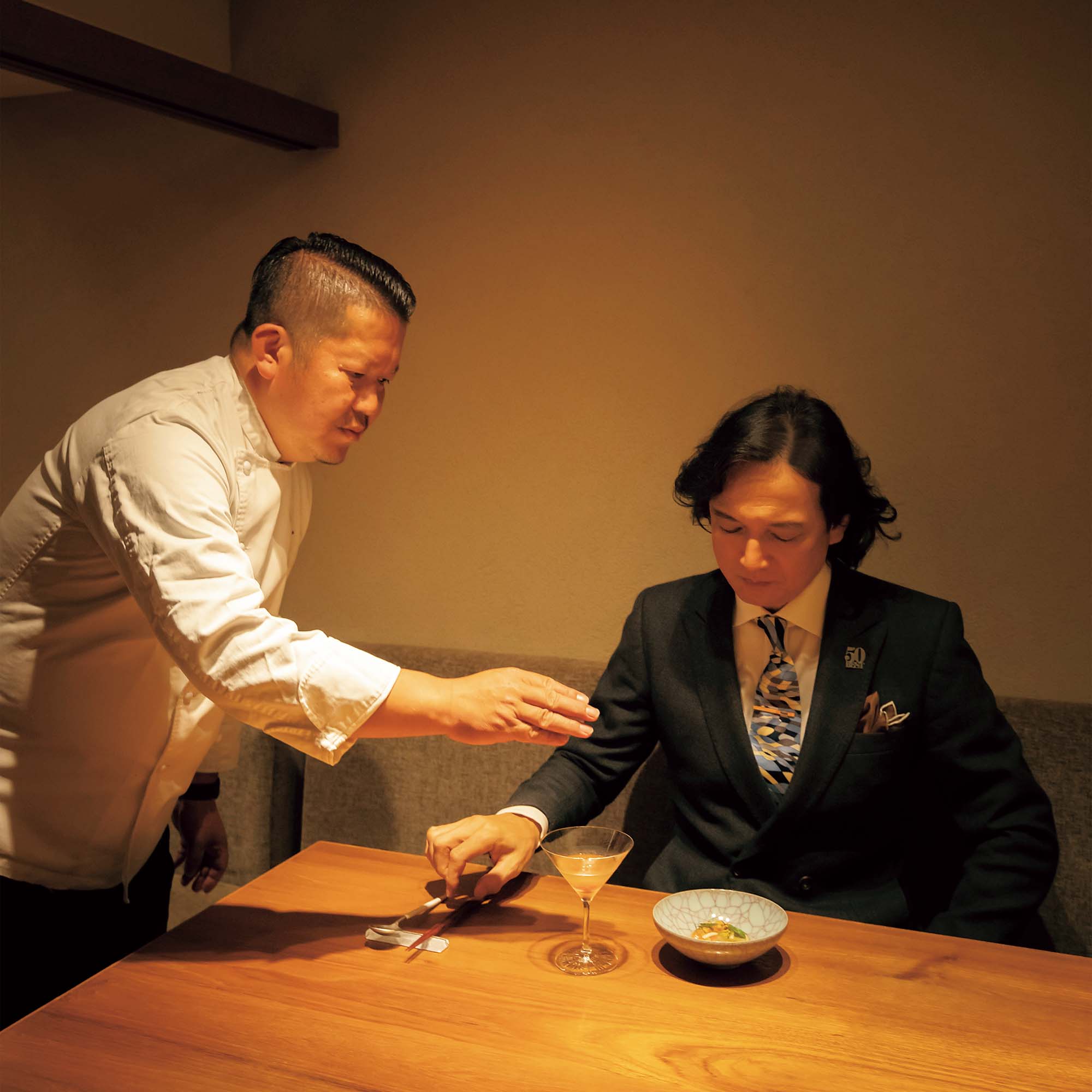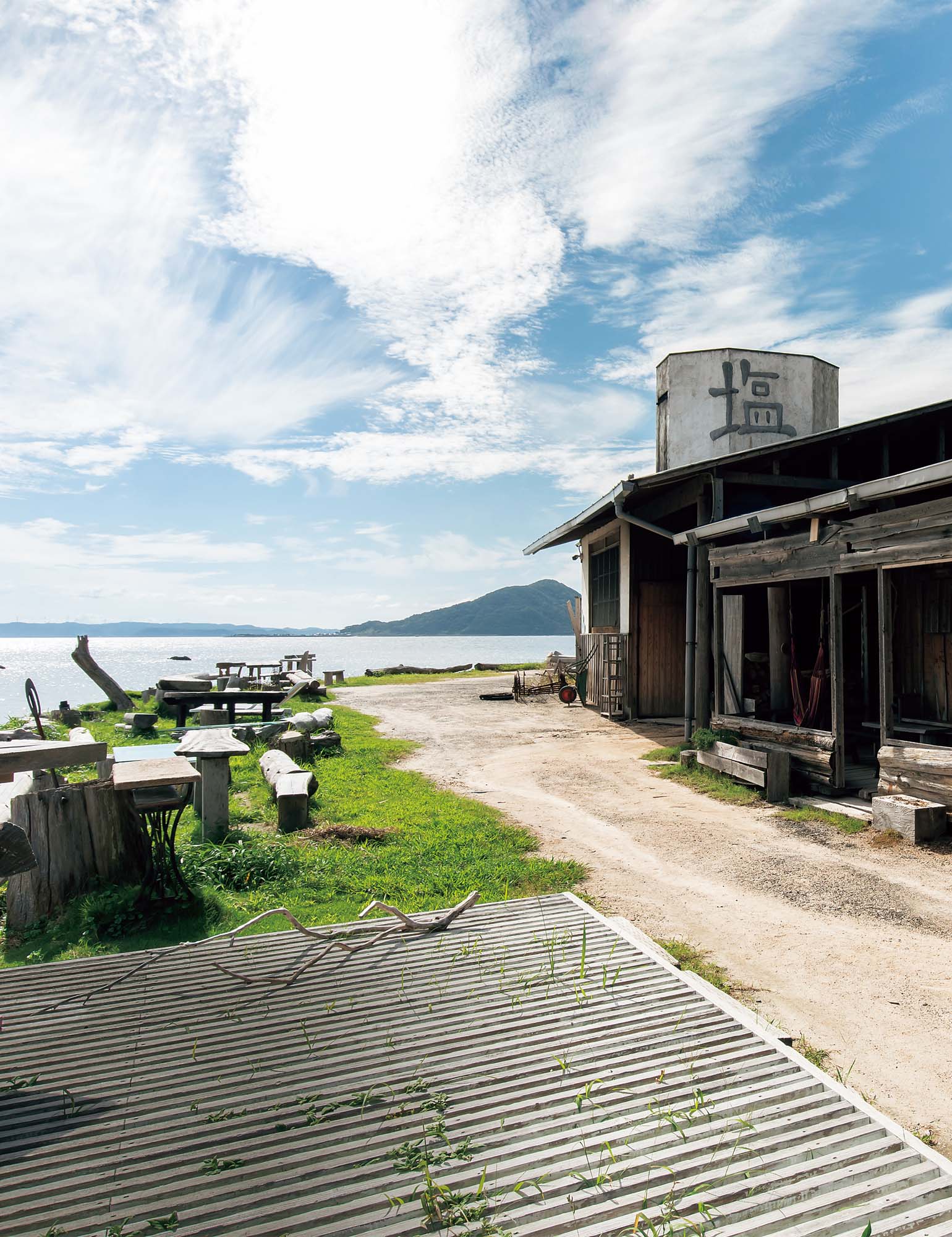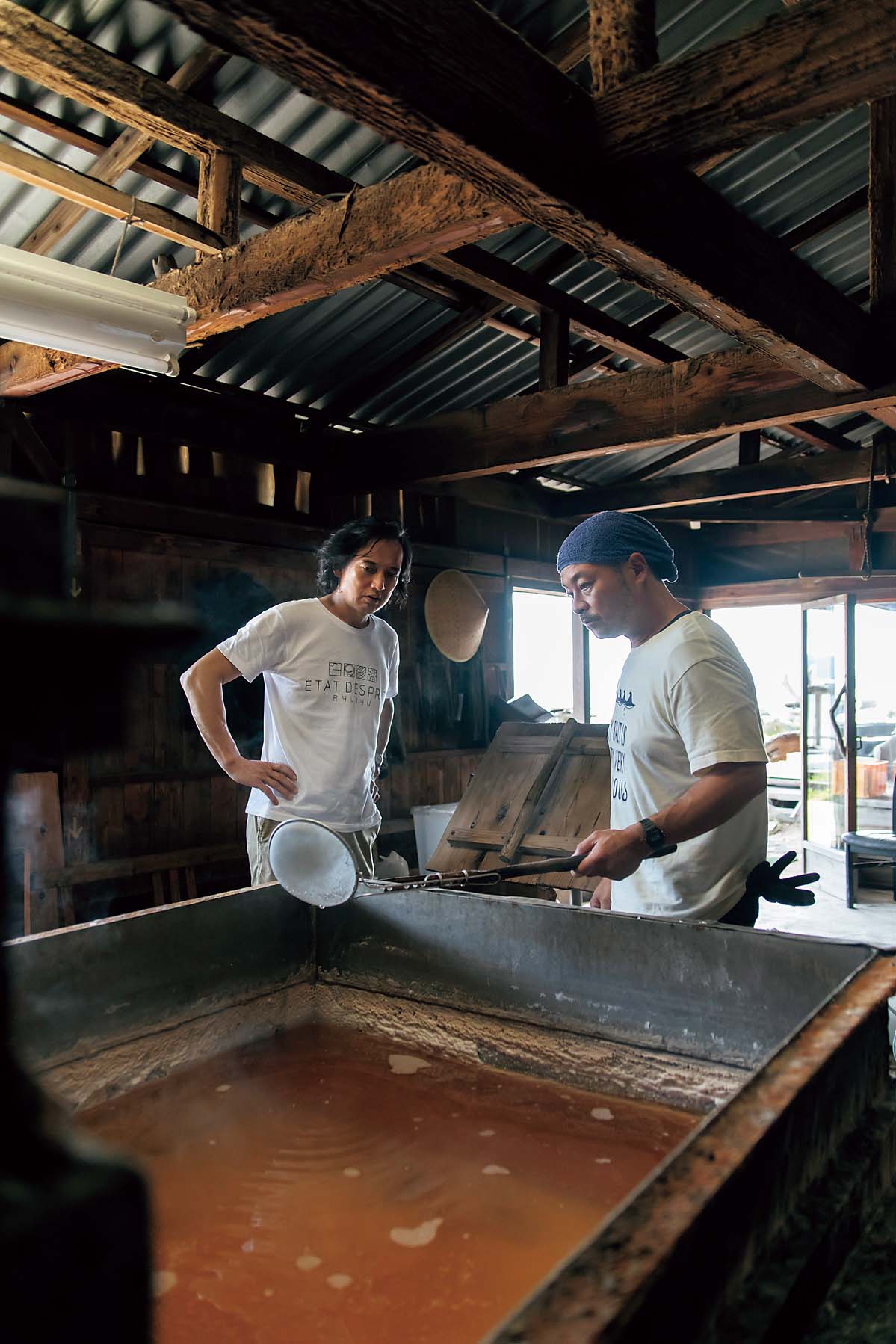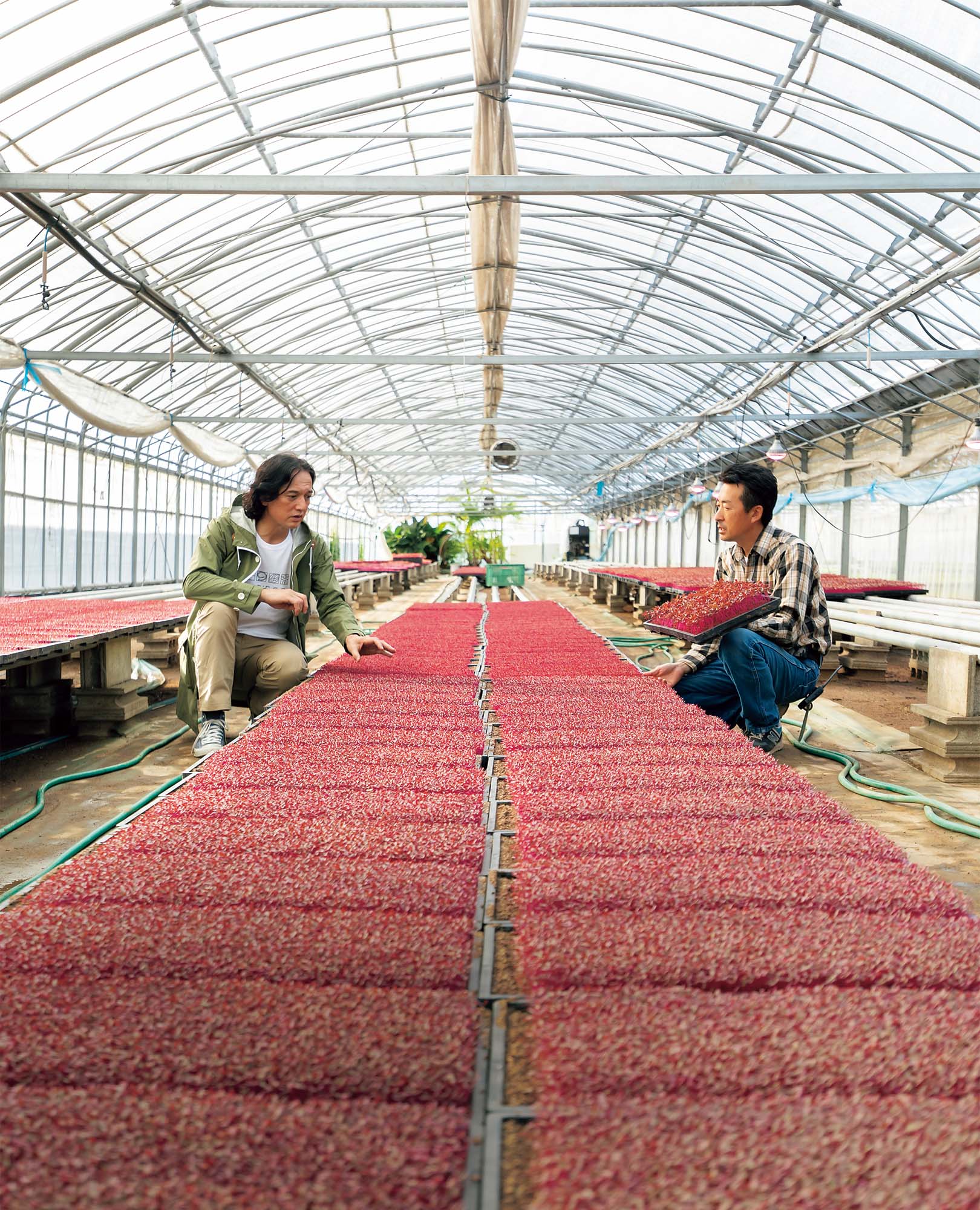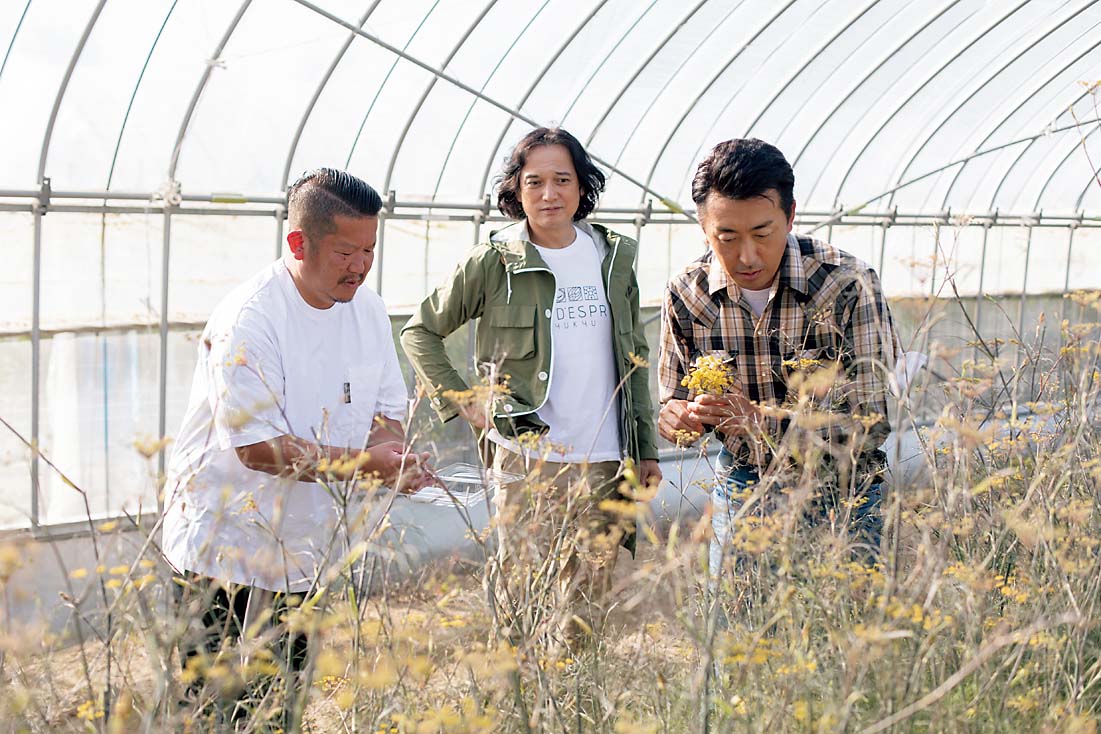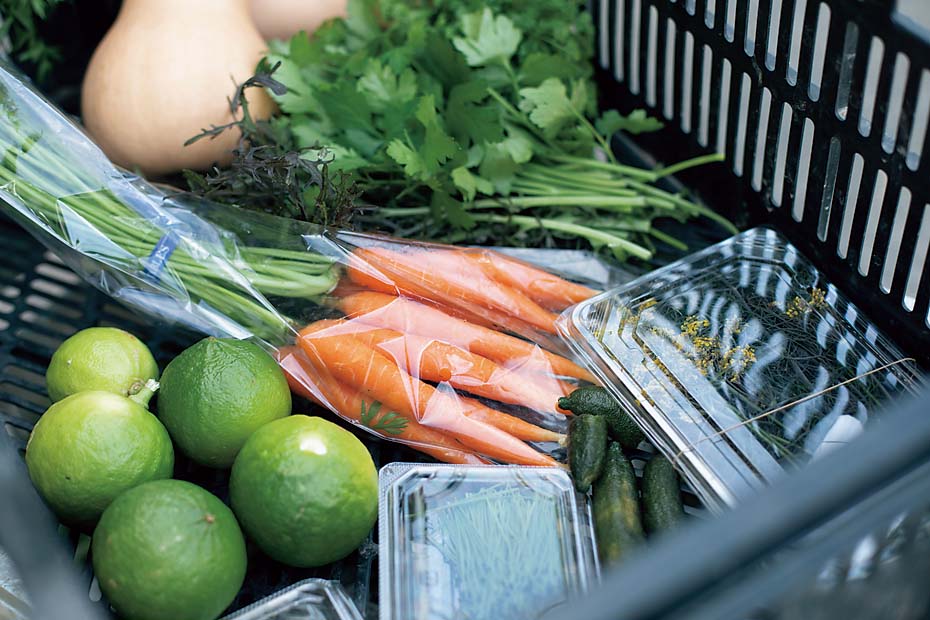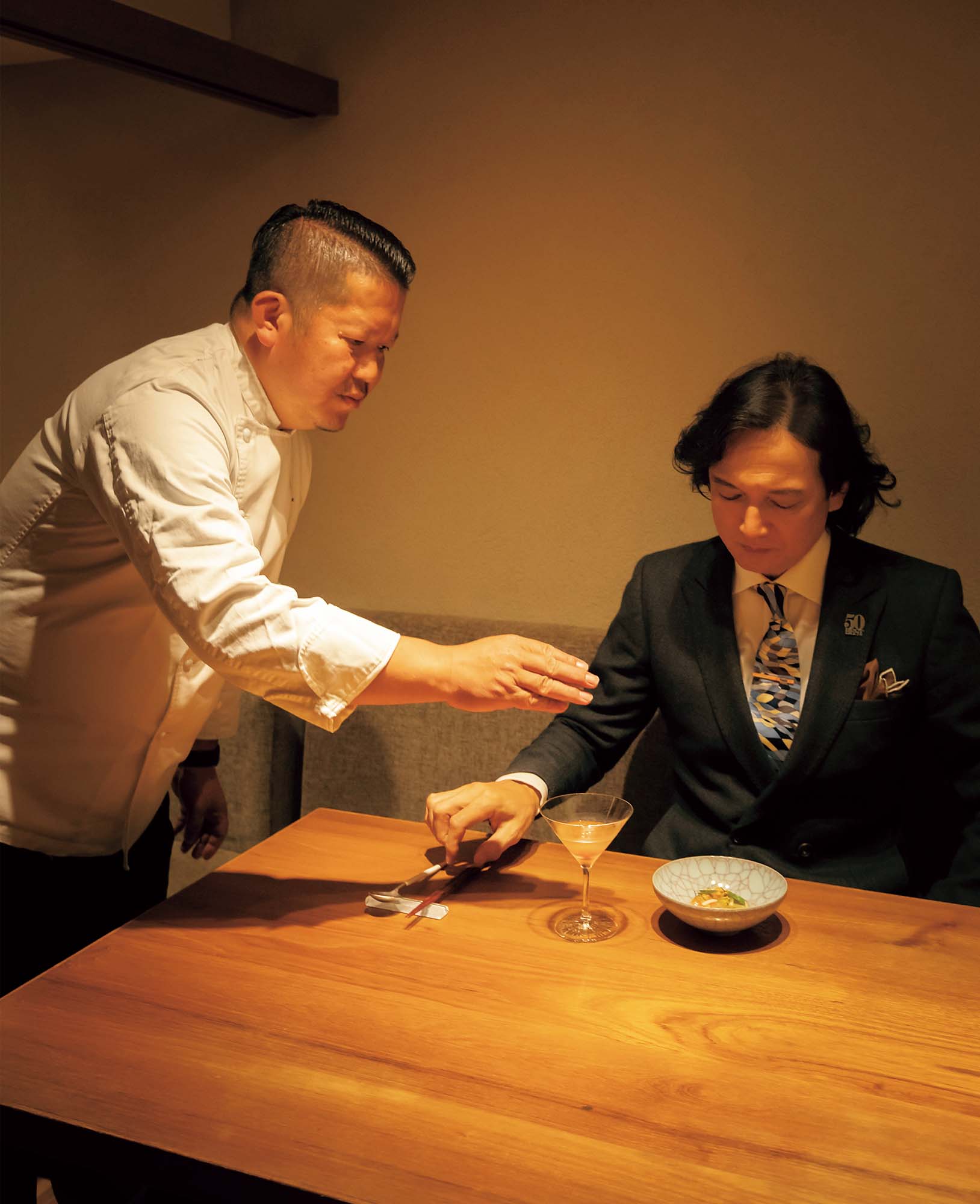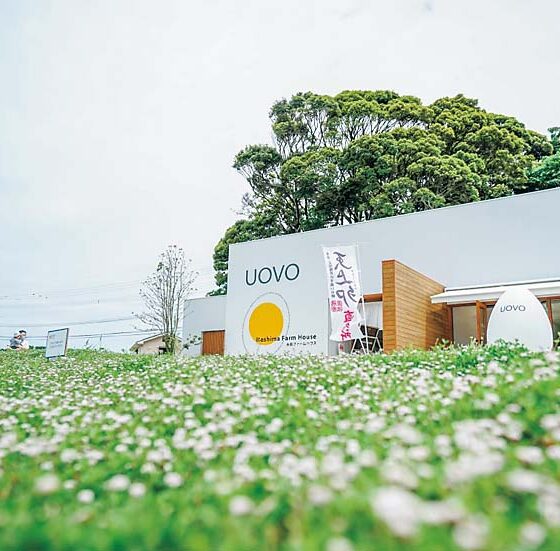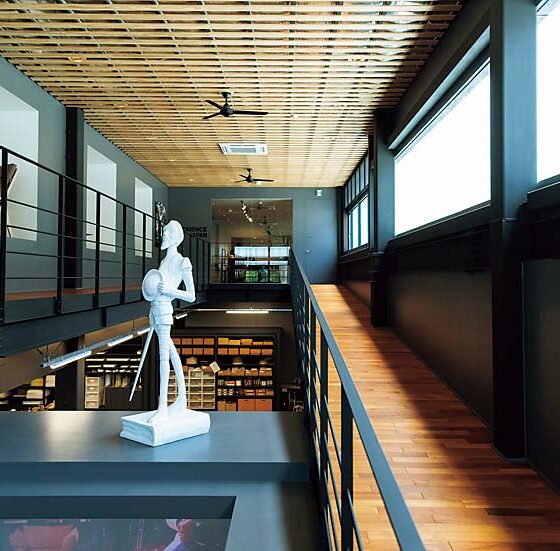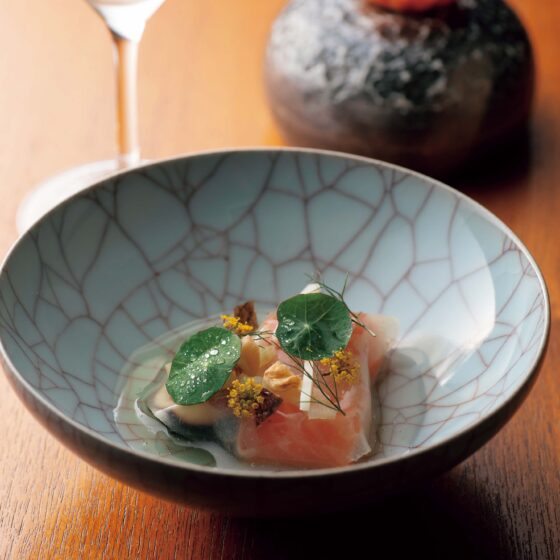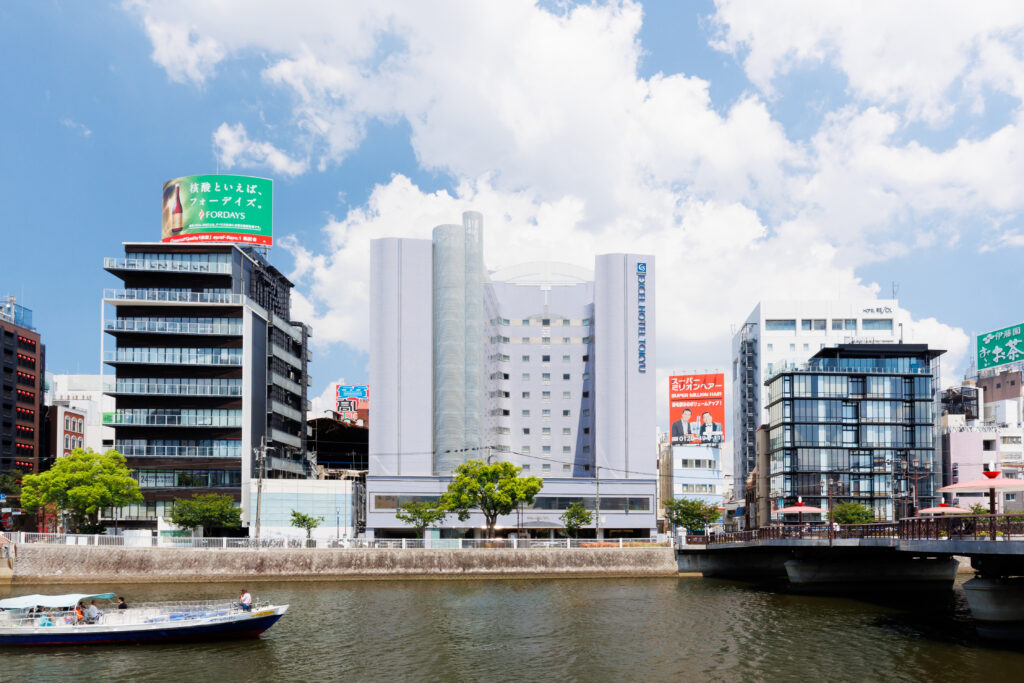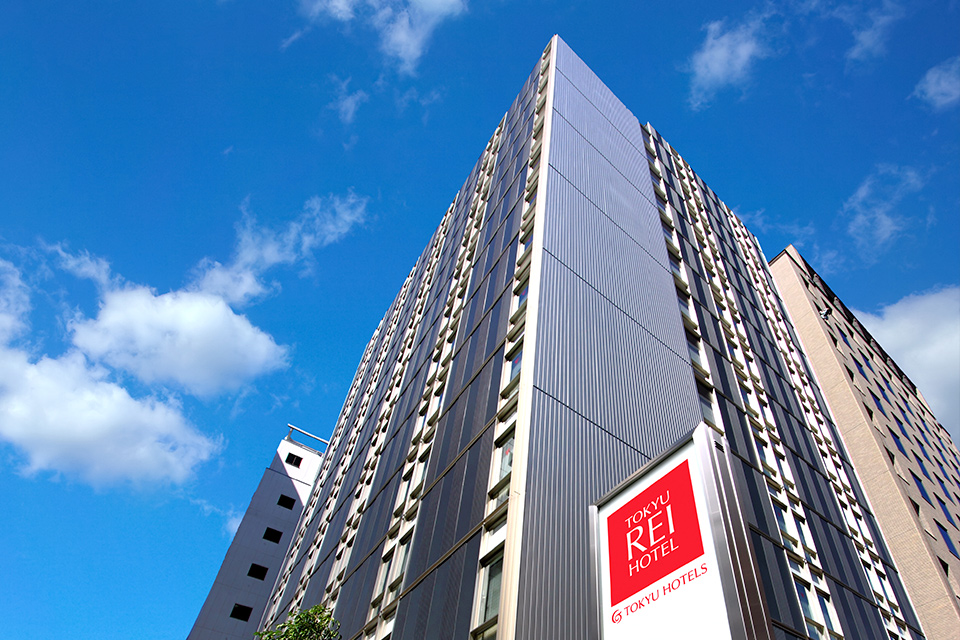- Using the urban expressway and Nishi-Kyushu Expressway, it takes about 30 minutes by car to reach Itoshima from downtown Fukuoka and an additional 20-30 minutes from downtown Itoshima to the city’s beachfront.
- When most people hear the name “Itoshima”, they imagine it is an island in the ocean. However, Itoshima is actually a peninsula, not an island. The fact that it can be accessed easily from Fukuoka City is also one of the secrets behind its popularity. The city is positioned between the Genkai Sea to the north and Mt. Rai with its crystal clear streams to the south. Itoshima is truly a “treasury of food” surrounded by both the ocean and mountains.
- Mr. Nakamura first visited one of Chef Fukuyama’s favorite producers located in an area called Shimakeya. While traveling roads lined with pine trees towards the ocean, the view opened to a glistening ocean with beautiful blue water. A little further down the road is the “Mataichi no Shio Seienjo and Kobo Tottan”.
- The salt factory opened more than 20 years ago, and since its founding, the factory has continued to produce salt using traditional multi-level salt fields. The factory owner Shuichi Hirakawa once worked as a Japanese chef, and after giving great thought to the food, he eventually arrived at the ultimate seasoning, salt.
- “The factory is located where the coastal zone and oceanic zone of the Genkai Sea meet, resulting in water that is filled with minerals from both land and sea. I collect seawater for making salt on days when the ocean is beautifully clear.”
- Such days only occur several times a month, and Mr. Hirakawa uses his experience accumulated over the years to identify these opportunities. The seawater slowly passes through a multi-level salt field made of bamboo that allows the water to evaporate over a period of 7-10 days. Repeating this process many times slowly increases the salt content of the seawater.
- Once the salt content is high enough, the seawater is transferred to a flat bottom salt kettle where it is heating to simmering temperature as if making soup. The salt crystals appear several days later when the seawater starts to turn a dark color. The crystals then are allowed to sit undisturbed in a wooden cask for one day before separating the salt and nigari (bittern).
- Mr. Hirakawa uses wood to heat the salt kettle, not gas. “Gas is stable and easy to use, but the flavor is completely different. We have done everything by hand since opening the factory. Small changes to the methods have a major effect on the salt.”
- After viewing the salt-making process, Mr. Nakamura expressed his respect, “Making salt requires both physical strength and the five senses. It is truly hard work but also very rewarding”. The factory makes about 10 types of salt using different production methods and mixtures. Also, located about 20 minutes by car from the factory is eat-in dining space including the restaurant Gohanya Itaru and café Sumi Café. Souvenirs can be found at both Mataichi no Shio and the Shinzaburo Shoten that sells both food and other items. Another potentialstop is the Oshi-no-Chiitama salt soba restaurantscheduled to open this fall.
Mataichi no Shio Seienjo Kobo Tottan
-
Address: 3757 Shimakeya, Itoshima-shi, Fukuoka Prefecture
Tel: 092-330-8732
Business hours: 10:00–17:00
www.mataichi.info
- The next destination was Kubota Farms, which grows a wide variety of herbs and vegetables. The farm opened about 50 years ago when the founder relocated from Kurume in southern Fukuoka Prefecture to Itoshima in search of a place without frost.
- Originally, the farm grew only perilla, but as the number of hotels and western restaurants grew in Fukuoka during the 1980s, a group led by the current head of the farm Masayuki Kubota started to grow microgreens. Of the more than 100 vegetable varieties regularly grown at the farm, about 60-70% are herbs, western vegetables and microgreens.
- Microgreens are valuable ingredients that have been treasured by fine restaurants in recent years. Chef Fukuyama, who joined Mr. Nakamura here at the farm, has been using Kubota Farms’ herbs and vegetables for many years.
- Oxalis, Pentas, Amaranthus…
- The microgreens and edible flowers grown inside the greenhouses have strong fragrance despite their small size and leave a unique taste. One example is fennel flowers with stem. Upon trying one inside the greenhouse, Chef Fukuyama stated, “It has a sweet taste and excellent fragrance”. When Mr. Nakamura tried one, his face suddenly looked very pleased as he said, “The flavor has a hint of anise”.
- Snap pea sprouts and pea tendrils have a unique shape and are often used in fine dining. Other varieties include micro-sized seedlings of celery, green perilla, watercress and kujo leeks. It is truly an unexplored world.
- According to Mr. Nakamura, “They are an essential ingredient that are added to dishes using tweezers to enhance the appearance”, while Chef Fukuyama added that their uniqueness “make them effective for accenting the flavor of the dish along with their use as decoration”.
- The Mataichi no Shio made by Mr. Hirakawa along with the herbs and vegetables grown by Mr. Kubota are treasures of Itoshima with its bounties of both land and sea.
- Itoshima is also home to countless other foods such as fish, meat and Japanese sake, but there could never be enough time to visit them all. The potential hidden within Itoshima’s rich nature is attracting increased attention from people both inside and outside of Japan.
- Mr. Nakamura summed up his visit stating, “I was again surprised by the overwhelming appeal of the nature and food of Itoshima. I enjoyed the blue water and gentle sea breeze, as well as the great view at Futamigaura. I truly experienced the rich natural environment and understand why so many people move to Itoshima. It would also be nice to live in Fukuoka City for about a month and come here on the weekends”.
- It appears that Mr. Nakamura, a gourmet connoisseur who knows the world’s top-class restaurants well, has also fallen in love with the food items of Itoshima.
Kubota Farms
-
Address: 5124 Shimasakurai, Itoshima-shi, Fukuoka Prefecture
Tel: 092-327-0559
kubotafarms.com



